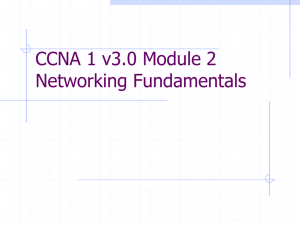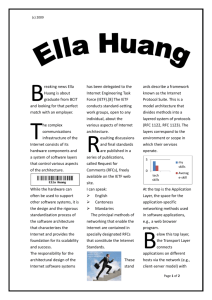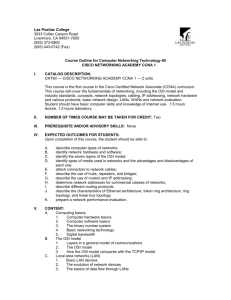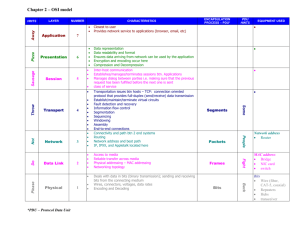Lab 2.3.7 OSI Model Characteristics and Devices
advertisement
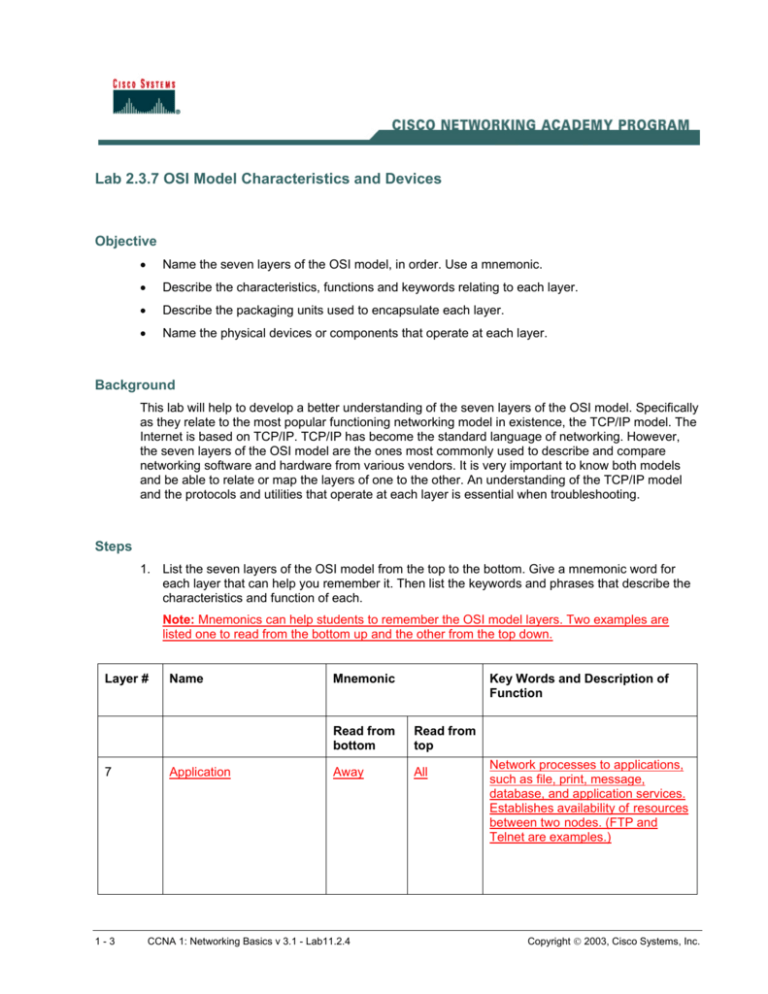
Lab 2.3.7 OSI Model Characteristics and Devices Objective • Name the seven layers of the OSI model, in order. Use a mnemonic. • Describe the characteristics, functions and keywords relating to each layer. • Describe the packaging units used to encapsulate each layer. • Name the physical devices or components that operate at each layer. Background This lab will help to develop a better understanding of the seven layers of the OSI model. Specifically as they relate to the most popular functioning networking model in existence, the TCP/IP model. The Internet is based on TCP/IP. TCP/IP has become the standard language of networking. However, the seven layers of the OSI model are the ones most commonly used to describe and compare networking software and hardware from various vendors. It is very important to know both models and be able to relate or map the layers of one to the other. An understanding of the TCP/IP model and the protocols and utilities that operate at each layer is essential when troubleshooting. Steps 1. List the seven layers of the OSI model from the top to the bottom. Give a mnemonic word for each layer that can help you remember it. Then list the keywords and phrases that describe the characteristics and function of each. Note: Mnemonics can help students to remember the OSI model layers. Two examples are listed one to read from the bottom up and the other from the top down. Layer # 7 1-3 Name Application Mnemonic Key Words and Description of Function Read from bottom Read from top Away All CCNA 1: Networking Basics v 3.1 - Lab11.2.4 Network processes to applications, such as file, print, message, database, and application services. Establishes availability of resources between two nodes. (FTP and Telnet are examples.) Copyright 2003, Cisco Systems, Inc. 6 Presentation Pizza People 5 Session Sausage Seem 4 Transport Throw To 3 Network Not Need 2 Data Link Do Data 1 Physical Please Processing 2-3 CCNA 1: Networking Basics v 3.1 - Lab11.2.4 Data representation, coding (EBCDIC, ASCII), data transfer syntax, conversion, encryption, formatting, and compression services. Physical processing. Interhost communication. Establishes, maintains, and terminates connections between applications. End-to-end connections. Segments and reassembles data in proper sequence. Setup and teardown of "Virtual Circuits" (connection oriented). Can ensure segment delivery with error correction, recovery, and flow control. Network/Host addresses and selection of best path through an Internetwork (routing). Encapsulates upper-layer information into "packets". Access to media. Adds frame header, which contains the hardware address of the destination device or next device on the path, to upper layer information. The Data Link layer is divided into 2 sublayers: 1) the Logical Link Control (LLC) and 2) the Media Access Control (MAC). Binary transmission signals and encoding. Electrical (copper), light (fiber), and physical connections and media (cabling) between network devices. Copyright 2003, Cisco Systems, Inc. a. List the seven layers of the OSI model and the encapsulation unit used to describe the data grouping at each layer. Also list the networking devices that operate at each layer, if applicable. 3-3 Layer # Name Encapsulation Unit or Logical Grouping 7 Application data 6 Presentation data 5 Session data 4 Transport segments 3 Network packets router 2 Data Link frames NIC, bridge, switch 1 Physical bits transceiver, repeater, CCNA 1: Networking Basics v 3.1 - Lab11.2.4 Devices or Components that Operate at this Layer Copyright 2003, Cisco Systems, Inc.
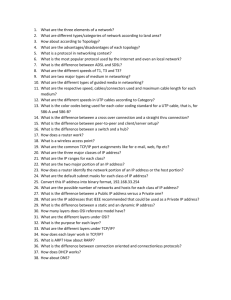
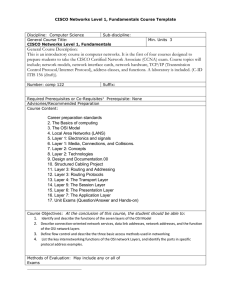




![Network Technologies [Opens in New Window]](http://s3.studylib.net/store/data/008490270_1-05a3da0fef2a198f06a57f4aa6e2cfe7-300x300.png)
